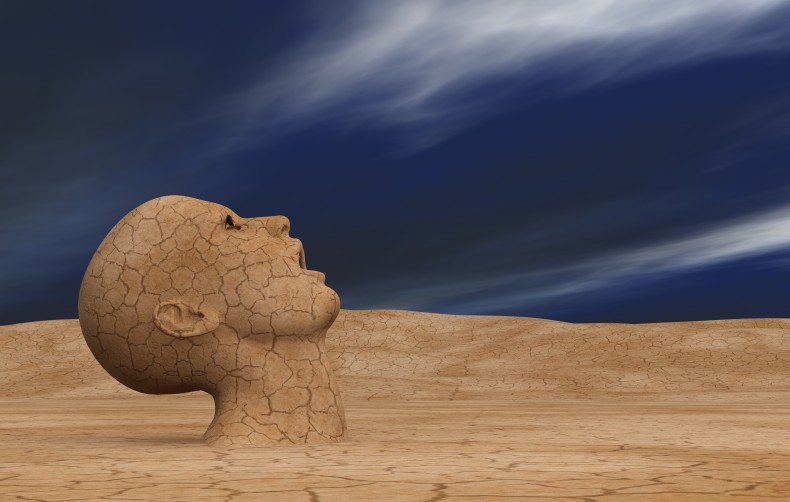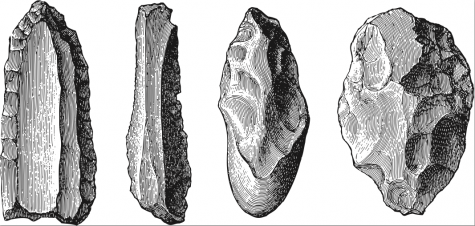 As we know by now, science is not the last word on anything. It is one story among many, and it alone doesn’t satisfy every inquiry.
As we know by now, science is not the last word on anything. It is one story among many, and it alone doesn’t satisfy every inquiry.
Over the last few years I’ve been visiting landscapes associated with the Bering land bridge in western Alaska. Most archaeologists believe this is where the first people crossed from Asia to North America in the late Pleistocene, a theory which has been bolstered by recent genetic ties found between modern Native America and Asian haptolytpes. But there is more than one way of telling a story of human arrival.
Nikki Cooley, a Navajo river guide from Northern Arizona, told me she didn’t believe in the land bridge, at least not as the origin of Native American ancestry. To her, the migration from Asia to North America never happened. Her people, she said, came from the ground. This she learned from her elders, who learned it from theirs, a bloodline much closer to the first people than most scientists who are telling their very different, empirical story.
The emergence point Nikki spoke of is an actual place in the desert, a spring where water wells up blue and clear, and you look into it as if seeing into the eye of legend. You will see darkness at the bottom of this spring, a place well understood in Southwestern tribes. There is a hole in the floor of ceremonial kivas of the Hopi, little more than a cup that the casual observer might step right over. This is called the sipapu, as religious historian Mercea Illiade calls it, the axis mundi, the axis of the world where people are said to have emerged from the last world into this one. I wonder if the story might have come from the land bridge, a cultural and genetic bottleneck that only certain people fit through, a hole that opened into the Americas.
I asked Cooley if she thought that coming out of the ground was a metaphor for her people having such a long residency in a place. She said it is no metaphor.
Cooley said, “I firmly believe we did not migrate here, maybe we crossed the Bering Strait when we were hunting, we probably went there and back, but I don’t believe we came from there. We came from here. First Man and First Woman; Changing Woman made my people. My dad always says, People say I come from Page or I come from Flagstaff, and I don’t come from any place but earth. He picks up a piece of dirt or a rock and says I come from here. I have friends who are scientists and they talk about it. I politely listen but I disagree.”
Sites excavated in eastern Siberia date as far back as 27,000 years ago, indicating that people lived near a land bridge exposed between the top of Asia and North America when sea levels were 400 feet lower. Evidence is indisputable that Asians crossed over somewhere in the vicinity of this putative land bridge, either inland or by the land bridge coast. Many genetic studies indicate a split between Native Americans and ancestral Asians somewhere on the order of 20,000 to 35,000 years ago, all of this drawing the eye to the land bridge. But it takes a certain kind of blinder to believe that one story alone can cover the issue.
When I was younger and too forward with my questions among Natives, I sat with a singer named Buck Navajo in his hogan in juniper country of northern Arizona. The old man did not speak English, at least not to me. He took a small elementary-school chair and I sat on the red-dirt floor, a fire kindled inside a half-barrel wood stove between us. He shared a polished leather pouch that he said contained corn pollen, a sacred thing that has always been with the people. I rubbed it in my fingers, it was smooth from being touched so many times. When I asked when the people acquired corn, the question went back and forth in Navajo and English. The grandson told me that corn has always been with the people.
I smiled, a little embarrassed, thinking I had not posed the question properly, failing to convey the simplicity of my inquiry. Certainly, I thought, corn has not always been with the people. It was first cultivated a few thousand years ago, not back in time immemorial. And the cultivar itself came from the Valley of Mexico, the opposite direction from where his people originated in the north, so I was wondering when and where they picked it up. Figuring Buck Navajo a man of reason, I began laying out to him the breadcrumbs of his people’s history, at least as I knew them. I spoke of Arctic origins where his own language is still spoken, and then a southward migration through British Columbia toward the Southwest where the first Navajo are thought to have settled near the Four Corners no earlier than the 15th century AD.
The grandson translated my apparent great concern over the source of his people, and when the grandfather’s words came back, they were the same as what Cooley told me. The people came from the ground. There had been no migration.
Sitting with Buck, I realized I’d been trying to colonize his history with my own. In many traditions, you tell only your own stories, but we do have to talk about each other, about what we know, what we imagine, trying to understand what other people accomplished, how they arrived in a place. Otherwise we risk becoming self-absorbed and solipsistic. We risk retreating even deeper into believing nothing but our own narrative, which in my case is the mythology of science. In that hogan, I realized that more that one story can be true at once. It is not myth versus reality, but two myths, two realities, one place.
Science has not proven Cooley or Buck Navajo wrong. No definitive archaeological remains have come from the land bridge, namely because it isn’t there anymore. What archaeologists do know of the earliest people in North America comes from charcoal, rock pieces, and harvested animal remains found in soil and permafrost. In other words, this knowledge comes from the ground.
Images: Shutterstock

Love it. Both trails of belief are beautiful in their own way. Craig, as always, you rock!
I kept thinking that someone else was going to respond critically to this posting and since that has not happened I guess that someone will be me. The basic question about the origin of the Navajo is: Which explanation is true, the tribe’s or science’s? While science may not definitively be able to prove there was a Bering land bridge crossing, I can guarantee you the tribe didn’t gush from a spring gushing out of a hole in the desert.
And it doesn’t matter how convinced the Navajo are by their explanation and how charming a tale the water birth makes. It’s wrong. And in that Craig can’t accept that there is a right and wrong explanation, and not just one story’s narrative versus another’s, he doesn’t why science has become a world-wide truth telling system even if it isn’t the last word on many things. And he also doesn’t understand that his defense of an explanation for which there is zero evidence is the fruit of a science journalism school worldview which says that the most important thing a journalist can do is tell a good story.
I think that is bosh and hokum and a slew of much stronger profanities. What a science journalist must do is say what is even if that saying offends tribal elders, and religious sects, and climate change deniers. Say it and then not apologize for the triumph of evidence over the most seductive of narrative arcs.